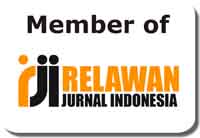Lecturer’s Belief and Classroom Practices on The Use of Video in English Language Teaching
Abstract
Keywords
Full Text:
PDFReferences
Anugrah, N. J., Sumardi, S., & Supriyadi, S. (2021). Teacher’s Beliefs on Integrating Mobile Application in EFL Classroom. In English Language and Literature International Conference (ELLiC) Proceedings , 258–262.
Aryani, R., & Rizkiyani, F. (2017). Video Educative Learning to Improve Listening and Speaking Skills of English by Imitate the Native Speaker. In English Language and Literature International Conference (ELLiC) Proceedings , 206–210.
Borg, S. (2003). Teacher cognition in language teaching: A review of research on what language teachers think, know, believe, and do. Language Teaching, 36(2), 81–109.
Breen, M. P., Hird, B., Milton, M., Oliver, R., & Thwaite, A. (2001). Making sense of language teaching: Teachers’ principles and classroom practices. Applied Linguistics, 22(4), 470–501.
Cahyana, A. A. C. (2020). The use of YouTube video in teaching English for foreign language at vocational high school. Jurnal Pendidikan Bahasa Inggris Indonesia, 8(2), 1–11.
Creswell, J. W., & Miller, D. L. (2000). Determining validity in qualitative inquiry. Theory into Practice, 39(3), 124–130.
Farrell, T. S., & Bennis, K. (2013). Reflecting on ESL teacher beliefs and classroom practices: A case study. RELC Journal, 44(2), 163–176.
Fauzi, A., Damayanti, D., & Ilahi, T. (2017). A teacher’s beliefs on the integration of video technology in teaching speaking: A case study. International Journal of Pedagogy and Teacher Education, 1(1), 46–54.
Fauziati, E. (2015). Teaching English as a foreign language: Principle and practice. Era Pustaka Utama.
Febriana, G., & Hafifah, G. N. (2019). Teachers’beliefs and practices of using Youtube in EFL context in Muhammadiyah Senior High Schools of Surabaya. Humanities & Social Sciences Reviews, 7(3), 389–397.
Gall, M. D., Gall, J. P., & Borg, W. R. (2007). Collecting research data with questionnaires and interviews. Educational Research: An Introduction, 12(10), 227–261.
Hakim, M. I. A. A. (2016). The use of video in teaching English speaking (A quasi-experimental research in senior high school in Sukabumi). Journal of English and Education, 4(2), 44–48.
Hung, S. T. A., & Huang, H. T. D. (2015). Video blogging and English presentation performance: A pilot study . Psychological Reports, 117(2), 614–630.
Irawati, D. (2016). Supporting student’s English speaking achievement using video. IJEFL, 1(1), 45–60.
Kabooha, R., & Elyas, T. (2015, November). The impacts of using YouTube videos on learning vocabulary in Saudi EFL classrooms. In ICERI 2015 Conference (Pp. 3525-3531).
Kagan, D. M. (1992). Implication of research on teacher belief. Educational Psychologist, 27(1), 65–90.
Kennedy, C. (1979). Video in ESP. RELC Journal, 10(1), 58–69.
Khoirunisya’Masyhudianti, U., & Masithoh, H. (2018). A Teacher’s Beliefs and Practices of Using Video to Teach Speaking: A Case Study At SMA As-Salam Surakarta. Vision: Journal for Language and Foreign Language Learning, 7(1), 11–22.
Kholida, E. N. (2016). Enhancing listening skill based on authentic materials in higher education. Deiksis, 8(03), 256–266.
Kriswinardi, G. T., & Nitiasih, P. K. (2017). An analysis of using video on teaching speaking in EFL classroom of the eleventh-grade students of SMA N 4 Singaraja in academic year 2017/2018. Jurnal Pendidikan Bahasa Inggris Undiksha, 5(2).
Miles, M. B., & Huberman, A. M. (1994). Qualitative data analysis: An expanded sourcebook. Sage.
Mirzajani, H., Mahmud, R., Fauzi Mohd Ayub, A., & Wong, S. L. (2016). Teachers’ acceptance of ICT and its integration in the classroom. Quality Assurance in Education, 24(1), 26–40.
Richards, J. C., & Lockhart, C. (1994). Reflective teaching in second language classrooms. Cambridge university press.
Saleng, M. (2014). The implementation of video learning to improve speaking ability. E-Journal of ELTS (English Language Teaching Society), 2(3).
Seçer, Ş. Y., Şahin, M., & Alcı, B. (2015). Investigating the effect of audio visual materials as warm-up activity in Aviation English courses on students’ motivation and participation at high school level. Procedia-Social and Behavioral Sciences, 199, 120–128.
Ur, P. (1999). A course in language teaching: Practice and theory. Cambridge University Press.
Watkins, J., & Wilkins, M. (2011). Using YouTube in the EFL classroom. Language Education in Asia, 2(1), 113–119.
Williams, M., & Burden, R. L. (1997). Psychology for language teachers: A social constructivist approach (Vol 5). Cambridge university press.
DOI: http://dx.doi.org/10.31332/lkw.v0i0.5817
Copyright (c) 2024 Titin Rahmiatin Rahim, Fatnalaila, Yuliyanah Sain, Andi Rachmawati Syarief, Citra Prasisca P. Tohamba, Muflihun

This work is licensed under a Creative Commons Attribution-ShareAlike 4.0 International License.
Langkawi: Journal of The Association for Arabic and English indexed by:


















.png)
.png)

.png)
2.png)








